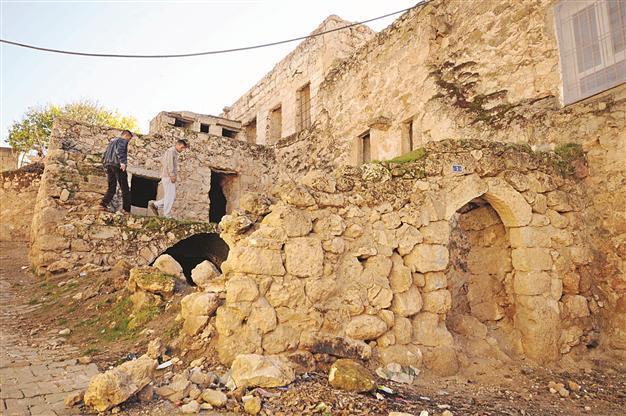Midyat’s underground city awaits attention
MARDİN - Anatolia News Agency

The underground city dates back to the early Christianity era and similar ones are in the Cappadocia region. But because of financial problems, it cannot restored. AA photo
An underground city in the southeastern province of Mardin’s Midyat district, which is known to have been used as a settlement in the early period of Christianity, will open to tourists if it is provided allocation.Specifications on the underground city had been prepared in 2009 and reports were sent to the Diyarbakır Council of Monuments, said Lozan Bayar, an archaeologist from the Mardin Municipality Protection and Supervision Office (KUDEB). “The city was registered as the Söğütlü Underground City and a project had been prepared to bring the city into tourism [sights],” Bayar said.
The structure dates back to the early Christianity era and similar ones can be found in the Cappadocia region, Bayar said. “This is more beautiful and bigger, but because of financial problems we cannot restore it. It was used as a sewer system, cesspool and a barn. Some of its parts have been covered with a wall. We plan to restore it with a nice project and bring it into Turkish and world tourism. It dates back to the fourth and fifth century, what we call the early Christianity period,” Bayar said.
Christians escaping the pressures of Rome used areas of the underground city as both shelter and living spaces, according to Bayar. “In the early Christianity period Rome was under the influence of Pagans before it later recognized Christianity as the official religion. Such underground cities provide security for people and they also performed their prayers there. They are also places to escape. Cisterns, water wells and sewer systems have been in existence since that period.
Covering 80 percent of the district
The underground city covers a large part of the district and is so big archaeologists were not able to uncover all parts of the city. “We knew about the existence of this place but did not know about its length. It has two main entrances and one in the north side. We have not reached every part of the city yet. Unfortunately, villagers use some part of the city as animal barn and cesspools. The city covers 80 percent of whole district,” Bayar said.
KUDEB’s art historian and the Sabancı Mardin City Museum Director Gani Tarkan said the underground city was launched as a second degree archaeological site by the Diyarbakır Council of Monuments on Feb. 26, 2010.
Older residents of the area knew about the city, but did not know its importance. “We got information from these people and determined the entrances. The entrances of some of the tunnels in the underground city have been closed. There are similar tunnels in Nevşehir. They are on the World Cultural Heritage List. One of them is Derinkuyu underground city. One million tourists visit this city annually. Maybe Söğütlü is more important than it is. But we learned about its existence only two-three years ago,” Tarkan said.
















